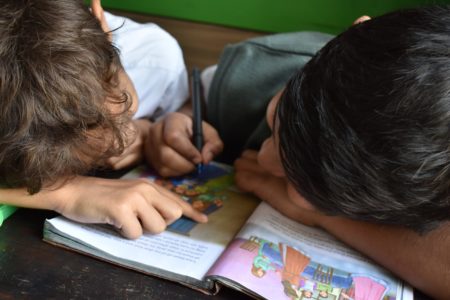April 17, 2020 – For parents seeking ways to engage their children during school closings here in Canada and elsewhere, an organization with which I have been involved offers an online educational program that children in much of the Developed World may find valuable. It is Kiva U, a portal to activities for students at all levels of education.
There are lessons for ages 5 to 18. The topics are related to Kiva’s mission as a site that provides non-interest-bearing loans to individual and group entrepreneurs around the world, particularly those in areas of poverty, gender inequality, and where clean water and food security remain challenges.
Kiva’s microloan program has crowdfunded in excess of $1.33 billion US to over 1.6 million individuals, families, and small groups relying on the participation of more than 1.8 million lenders like me who invest as little as $25 US per loan. Loan defaults are less than 4%. The loans are interest free and those who apply and get successfully funded often send progress reports back to their lenders to tell them how they are doing and how the money has helped to achieve their objectives.
My own personal voyage with Kiva began with a $100 loan divided into four projects back in 2007. Since then I have added another $230 to the kitty. this has translated into $2,175 spread over 87 loans in 34 countries. The money has gone to farming and agricultural pursuits, food distribution, small renewable energy projects, transportation, manufacturing, housing, construction, education and more. From the Solomon Islands to Palestine, from Armenia to El Salvador, and from Kenya to Mozambique, Kiva.org is making it possible for individuals and groups to raise themselves out of poverty not through charitable donations, but through entrepreneurial efforts backed by microloans. Thirteen years later I’m still committed to the program.
And now Kiva.org has launched Kiva U with some amazing content. I dipped into the curriculum to see what the ages 5 to 9 material looks like.
One module is dedicated to understanding food. It includes five activities ranging in time from 15 to 40 minutes. Content here describes the current state of food security in the world giving 5 to 9-year-olds facts that may not have been covered in the normal school curriculum. For example:
- 1 in 9 people in the world do not have enough food.
- 1 in 6 children are underweight.
- hunger and malnutrition represent the greatest risk to human health.
The children learn the story of one family in Kyrgyzstan and how they live, grow their own food, and raise animals like cows and goats to harvest the milk an make cheese. They can colour a picture that shows one of the family with their cow. There is a recipe for survival biscuits that the children can make, Then there is a scavenger hunt on the Kiva.org site to get to know some of the people and their projects that are asking for funding. And, of course, there is the inevitable ask at the end of the activities to get parents to become Kiva.org members through a $25 loan.
Other learning activities in the age 5 to 9 group cover refugees, global poverty, gender equality, gratitude and empathy, clean water, the power of family, and microfinancing.
A dip into the 14 to 18 age group provides age-appropriate resource material and lessons. I took a quick look at the microfinance module which includes six activities of varying lengths from 10 to 20 minutes. An explanation of microfinancing and who pioneered the concept is included along with links to online references and videos. There is an explanation of what is a microloan and how it works at the receiving level including a video of a case study along with discussion questions. Additional activities include a reading assignment, a word search, and, of course, a visit to the Kiva.org site to learn about borrowers, and an opportunity to become a lender.
I know that we here in Canada, and all across the planet are dealing with a global COVID-19 pandemic. But getting to understand the real-world challenges faced by much of humanity, and the impact a small amount of micro financed money can make is an invaluable lesson. One educator describes what Kiva U has done for those who have used the curriculum. It “not only taught my students valuable economic lessons but also gave them the opportunity to take ownership of helping others around the world.”
















